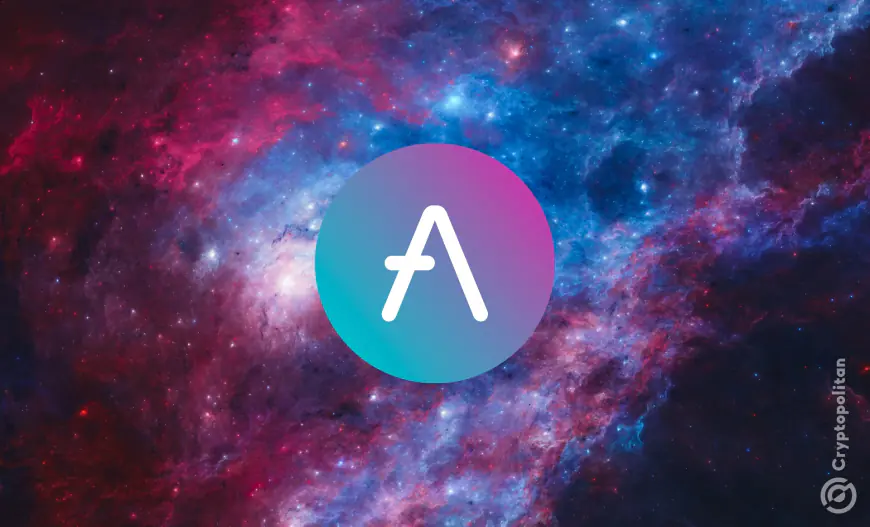Aave protocol (AAVE) adds third-party integration with BlackRock’s BUIDL token
The Aave protocol is growing its user base while expanding the supply of GHO and preparing for buybacks and token burns.

Aave protocol remains one of the most dynamically developing lending hubs. In an upcoming partnership, Aave will integrate the BUIDL token by BlackRock, gaining access to a token backed by short-term US Treasury bills.
Aave protocol (AAVE) will build a new stability mechanism for its GHO stablecoin, by integrating its reserve modules with the BUIDL token by BlackRock. Instead of retaining excess USDC liquidity, Aave will use a part of the reserves to mint the safe, asset-backed BUIDL tokens.
BUIDL is an Ethereum-based token, backed by short-term US treasuries. Additionally, BUIDL offers a small yield to all holders, at around $7M per quarter. BUIDL tokens still has a short list of 18 crypto projects that use the token as collateral or as a treasury. BlackRock has already tokenized more than 500M in T-bills through Securitize, creating one of the big concentrations of value in RWA tokens.
Aave has now joined the trend of using tokenized T-Bills in DeFi, where more than $2B of those conservative assets were tokenized in the last two years.
$AAVE just posted their GHO Stability Module Proposal.
It will enable third-party integrations, specifically with BlackRock's BUIDL infrastructure.
This is very bullish. ????⬇️ pic.twitter.com/OQ6r3V6L09
— Emperor Osmo ???? ???? (@Flowslikeosmo) August 26, 2024
Aave protocol rebrands and grows on Base
Aave protocol aimed to return to growth in 2024 after years of drifting and pressure from the bear market. In the past week, Aave rebranded its main website, as well as the GHO stablecoin, the chief source of liquidity in the protocol.
Aave was a relatively forgotten protocol during the 2022 and 2023 bear market, with flows moving to other DEX and liquidity pools. In the past weeks, Aave started growing its liquidity again, and is on track to surpass Lido, one of the most active liquid staking protocols.
As of August 2024, Aave is still the third-largest protocol in terms of value locked after surpassing Maker. Based on DeFi Llama data, Aave is on track to surpass Eigen Layer after liquid re-staking took a step back to lending.
Aave is also aggressively growing as the layer-2 DeFi protocol, taking spots on some of the most active rollup chains. This makes Aave still compatible with Ethereum, with early liquidity inflows, while also keeping fees low. Aave already secured more than $100M in value locked on Base protocol, which also supplies more than 30% of active wallets on the protocol.
GHO expands presence among collateral-based stablecoins
The expansion of Aave is reflected in the growing supply of the GHO stablecoin. In March 2024, during the market peak, GHO supply was on the low side, at around 35M tokens.
Gradually, GHO started growing to more than 120M tokens, raising the question of sustainability and putting the collateral to work. GHO hinges on a supply of USDC, which is considered one of the more reliable fiat-backed stablecoins. Aave has been rather conservative in growing its supply of stablecoins, staying behind Ethena’s rapid expansion to $3.6B in USDe.
There are also relatively few GHO holders, as the asset has not spread widely outside Aave. The stablecoin is also far from the supply of DAI, which is still more than 5.3B tokens. Despite this, deposit and lending activities, as well as flash loans, make Aave one of the key players in the DeFi lending ecosystem.
Aave now works to ensure sufficient liquidity and reliable collaterals. Analysts see the GHO supply rise to 175M tokens, which would also allow Aave to start buybacks for its native AAVE asset.
The AAVE token has been drifting in a range for years, with no significant breakout to previous highs. One of the expectations for Aave is to start using fees to buy back the token. AAVE is also near its lows against Ethereum (ETH), as traders expect a breakout. Previous estimations on AAVE buybacks predict the cutoff in about three months, if the growth of GHO supply keeps the current trend.
Aave has already prepared the Smart Burn Engine, which may decrease the supply of AAVE and essentially redistribute fees to holders. The buyback and burn is seen as one of the biggest upside factors for the AAVE market price. The buyback is still at the stage of a governance proposal but already affected the market as a bullish factor in the past week.
After the recent growth of GHO, AAVE peaked above $144 for the week, later sliding to $126.51.
Cryptopolitan reporting by Hristina Vasileva
What's Your Reaction?









































































































